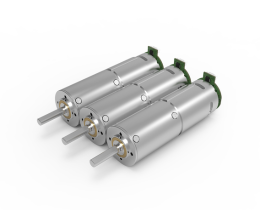DC Geared Motors: What’s Really Behind the Price Tag?
Let’s cut to the chase: when you’re hunting for a DC geared motor, the price list isn’t just a spreadsheet—it’s a puzzle. You’ve got specs, durability questions, and that nagging voice asking, “Am I overpaying?” Here’s the thing: pricing isn’t random. It’s a story about materials, engineering, and yes—value.
.webp)
Picture this: A factory manager once told me, “I bought the cheapest motors last year. Now I’m replacing them every six months.” Ouch. That’s the trap. A low upfront cost can bleed into downtime, repairs, and that soul-crushing feeling of wasted time. So, what should you look for?
The Nitty-Gritty of Pricing
It’s not just about horsepower or RPM ratings—gearing ratios, material durability, and thermal resistance play huge roles in both performance and cost. Stainless steel gears? They’ll outlast plastic ones but nudge the price higher. A motor designed for continuous operation in dusty environments? That requires extra sealing tech. Every detail adds up.
“But why do some brands charge double for similar specs?” Great question. Sometimes, you’re paying for precision testing or corrosion-resistant coatings. Other times? You’re covering a company’s inefficiencies. KPOWER, for instance, streamlines production to keep costs lean without cutting corners. No middlemen, no bloated markup—just motors that work.
Q&A: The Stuff You Actually Care About
Q: Why does the price vary so much between models?
A: Think of it like cars. A sedan and an SUV both get you places, but one’s built for rugged terrain. High-torque motors need reinforced components, which impacts cost. Always match the motor to your specific needs—not the flashiest specs.
Q: How do I avoid hidden costs?
A: Transparency is key. Scour product descriptions for warranty terms, efficiency ratings, and compatibility notes. KPOWER’s price lists, for example, break down costs per feature, so you know exactly what you’re paying for. No guesswork.
The Unspoken Rule of Reliability
Ever heard the phrase “buy nice or buy twice”? It’s gospel here. A motor that’s 20% cheaper but lasts half as long isn’t a bargain—it’s a liability. One client switched to KPOWER’s mid-range models and slashed their maintenance budget by 40%. The kicker? Their initial “investment” paid off in under a year.
Here’s the takeaway: A price list isn’t just numbers. It’s a roadmap to smarter decisions. Skip the sticker shock and focus on total cost—not just the first invoice. Because a reliable motor isn’t an expense; it’s the backbone of your operation.
And hey, if you’re still sweating the details? That’s what happens when you care about quality. The right supplier won’t just sell you a product—they’ll make sure it’s the last motor you’ll need to buy for a long, long time. That’s the kind of partnership KPOWER aims to build—no fine print, no surprises. Just motors that do what they’re supposed to.


































.webp)

